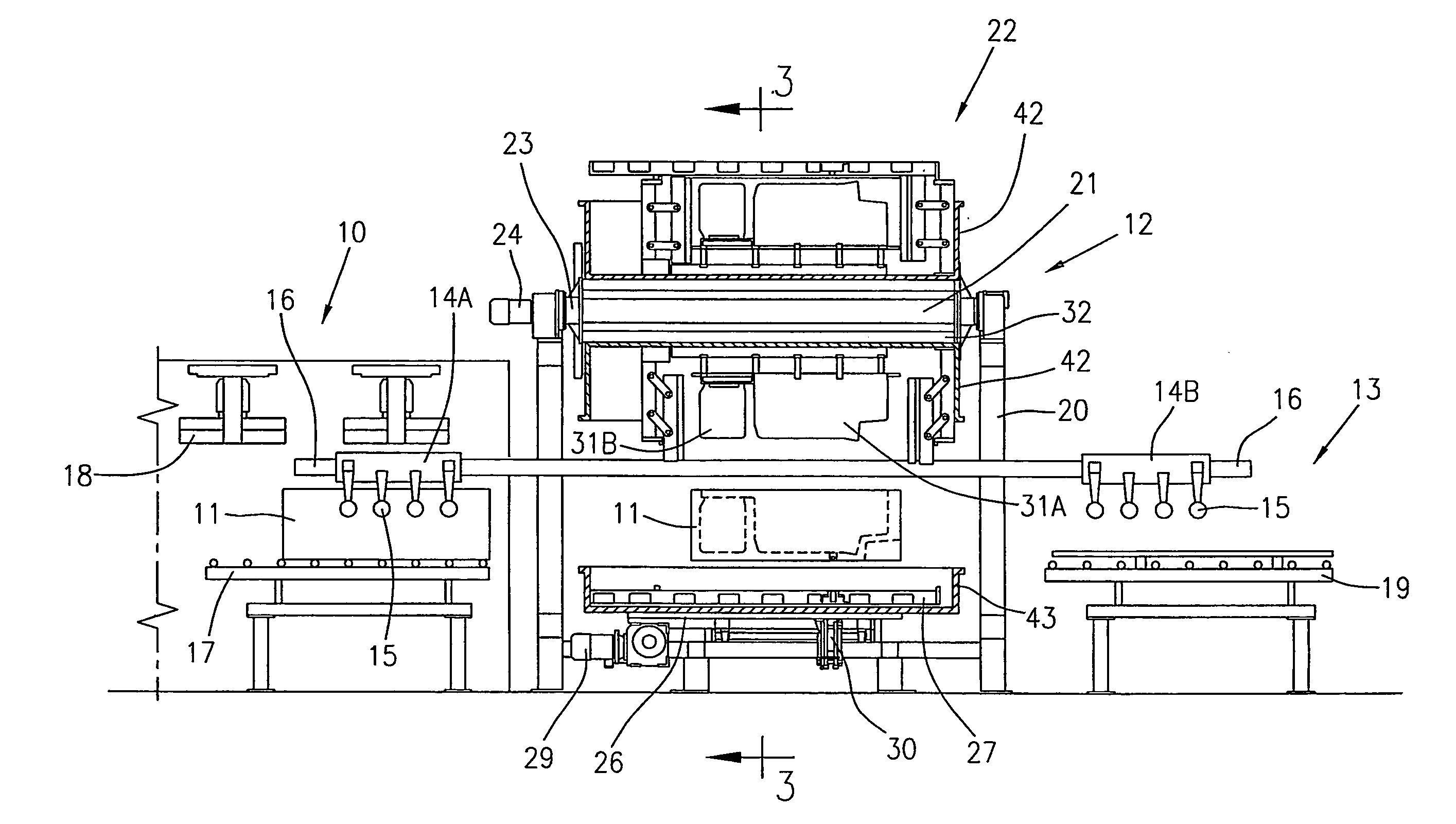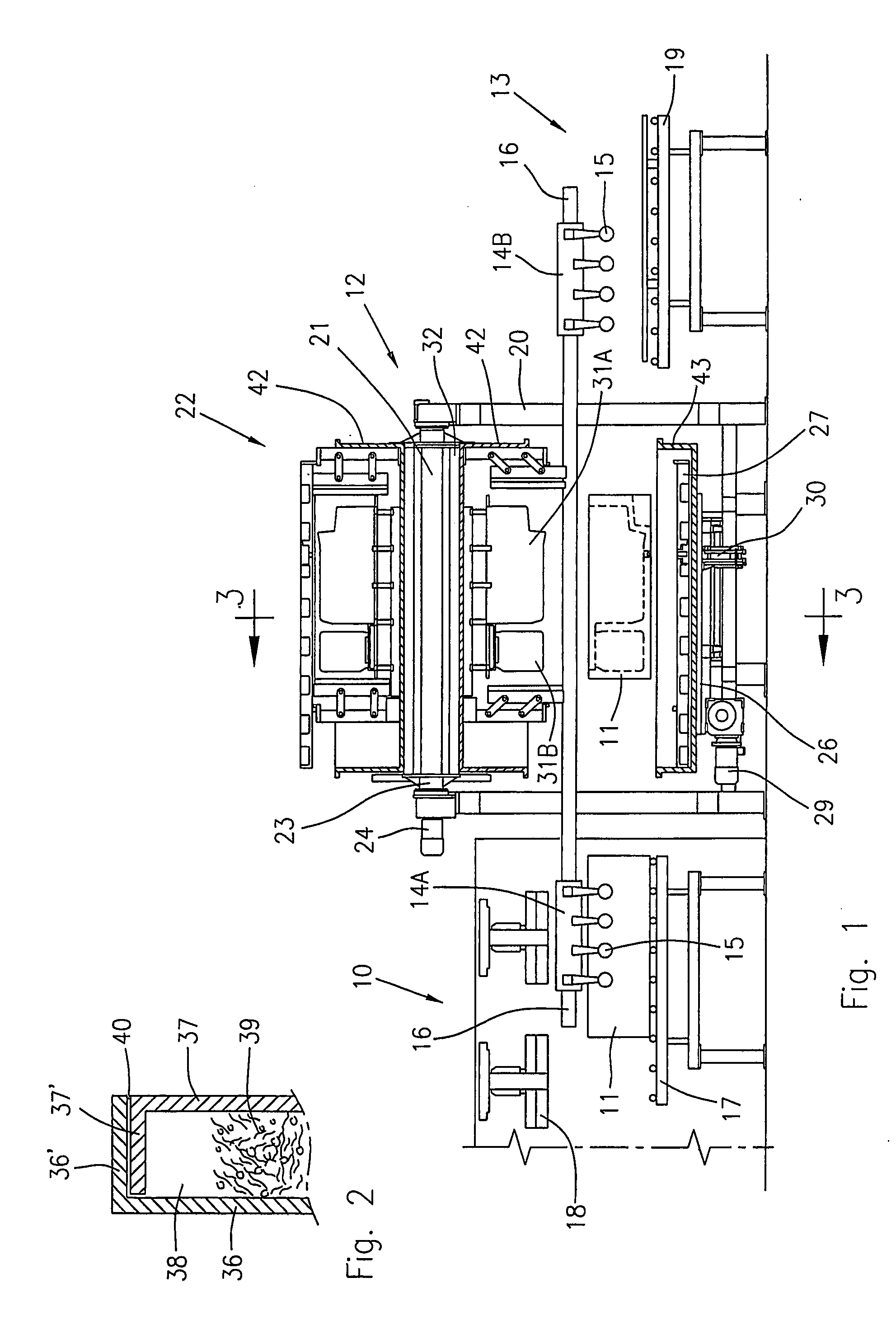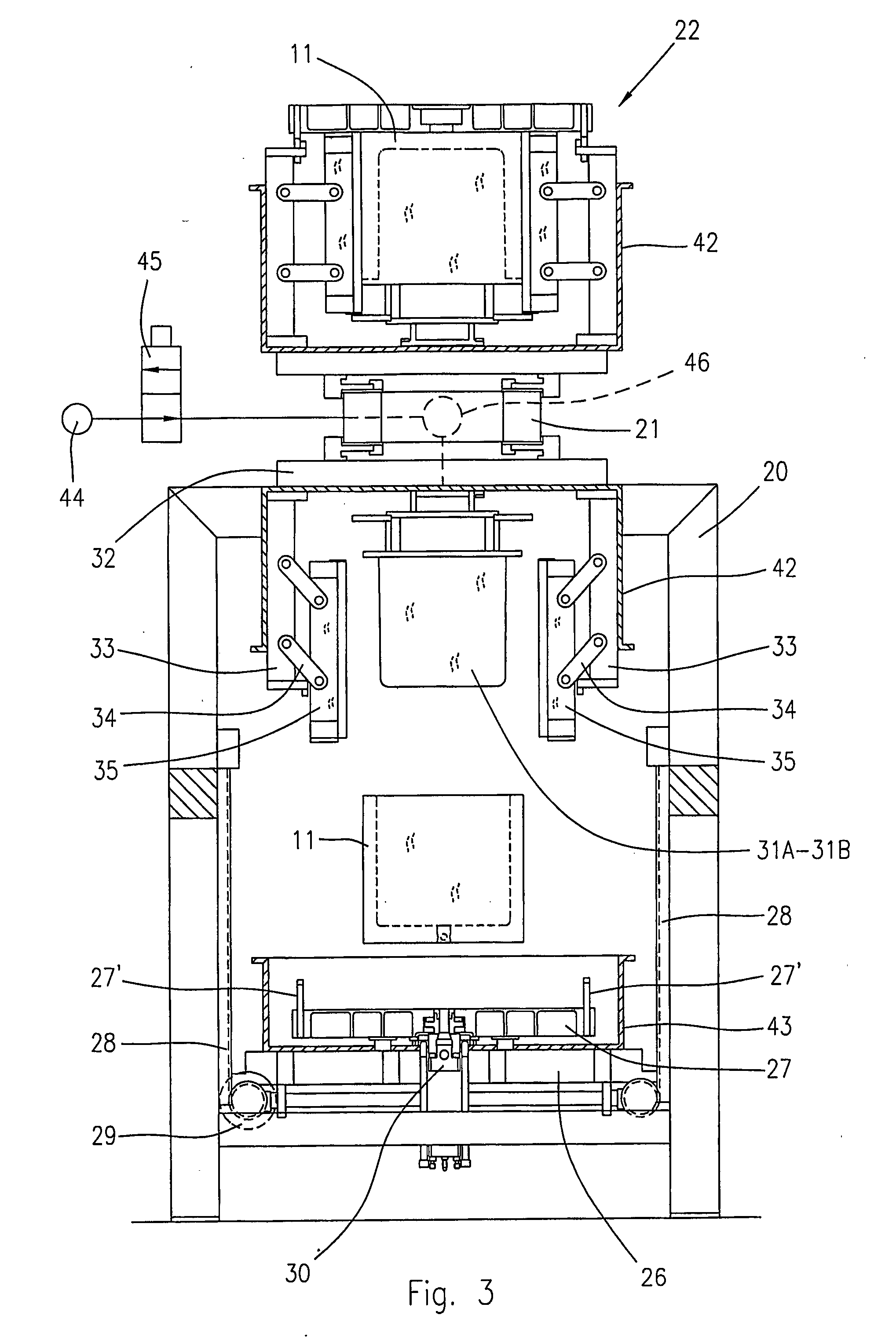Method and Rotary Drum Installation for Vacuum Foaming of Refrigerators
- Summary
- Abstract
- Description
- Claims
- Application Information
AI Technical Summary
Benefits of technology
Problems solved by technology
Method used
Image
Examples
Embodiment Construction
[0053]FIG. 1 shows an installation for foaming refrigerator cabinets, according to one possible embodiment of the invention.
[0054] As shown, a foaming installation comprises a preheating station 10 for the refrigerator cabinets 11, on a side of a foaming station 12, and an unloading station 13, on the opposite side from the foamed cabinets, can be moved towards a resting area for the final curing of the foam.
[0055] The refrigerator cabinets 11 can be transferred from the preheating station 10 to the foaming station 12, and from the latter to the unloading station 13 in any suitable way. For example, it is possible to use one or more motor-driven trolleys 14A, 14B provided with gripping means 15, for example a plurality of suction caps for grasping the cabinet 13 on both sides. The trolleys 14A and 14B are appropriately controlled to run along guide rails which extend longitudinally between the work stations.
[0056] The preheating stations 10 and unloading stations 13 can be of con...
PUM
| Property | Measurement | Unit |
|---|---|---|
| Time | aaaaa | aaaaa |
| Time | aaaaa | aaaaa |
| Pressure | aaaaa | aaaaa |
Abstract
Description
Claims
Application Information
 Login to View More
Login to View More - R&D
- Intellectual Property
- Life Sciences
- Materials
- Tech Scout
- Unparalleled Data Quality
- Higher Quality Content
- 60% Fewer Hallucinations
Browse by: Latest US Patents, China's latest patents, Technical Efficacy Thesaurus, Application Domain, Technology Topic, Popular Technical Reports.
© 2025 PatSnap. All rights reserved.Legal|Privacy policy|Modern Slavery Act Transparency Statement|Sitemap|About US| Contact US: help@patsnap.com



